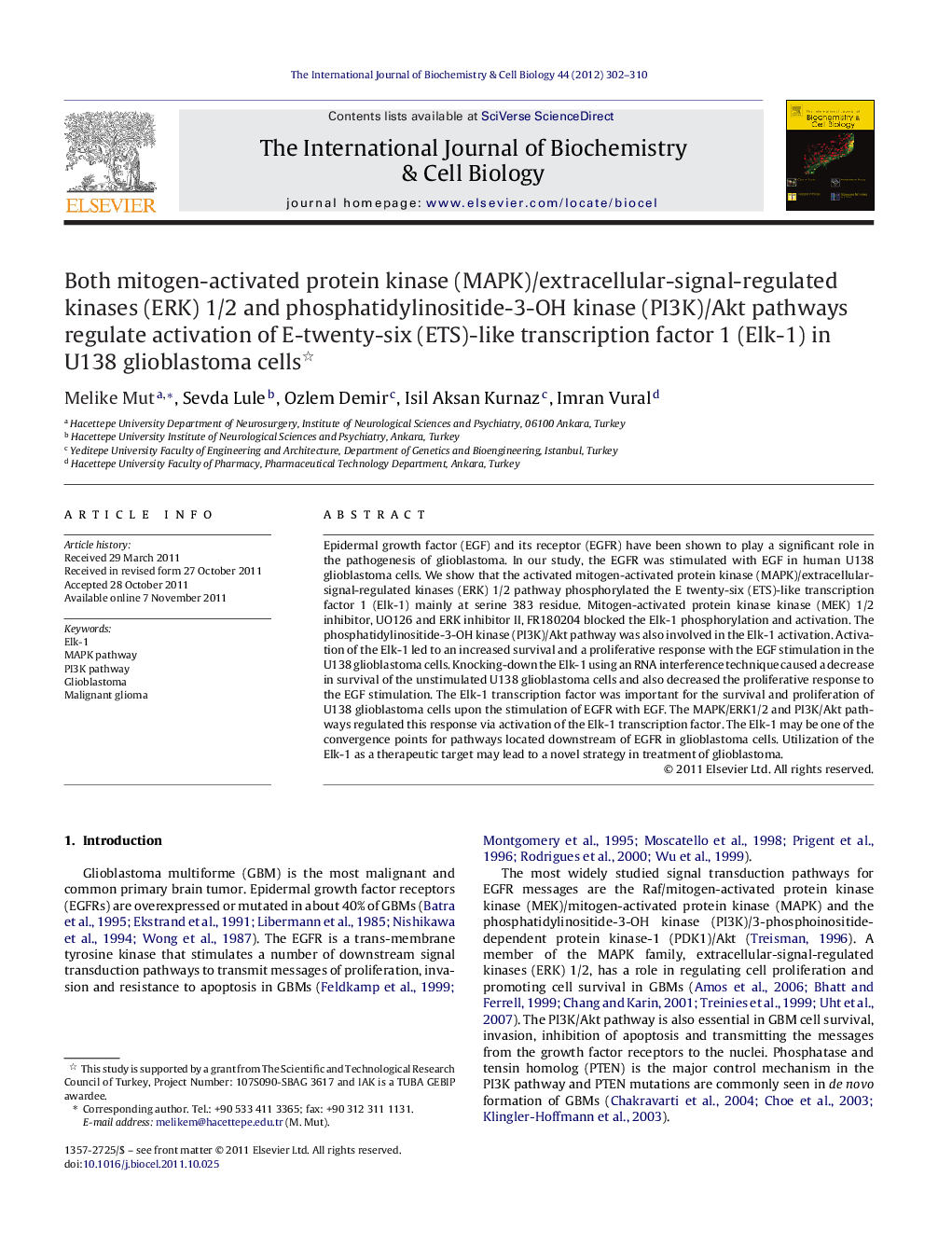| Article ID | Journal | Published Year | Pages | File Type |
|---|---|---|---|---|
| 1984094 | The International Journal of Biochemistry & Cell Biology | 2012 | 9 Pages |
Epidermal growth factor (EGF) and its receptor (EGFR) have been shown to play a significant role in the pathogenesis of glioblastoma. In our study, the EGFR was stimulated with EGF in human U138 glioblastoma cells. We show that the activated mitogen-activated protein kinase (MAPK)/extracellular-signal-regulated kinases (ERK) 1/2 pathway phosphorylated the E twenty-six (ETS)-like transcription factor 1 (Elk-1) mainly at serine 383 residue. Mitogen-activated protein kinase kinase (MEK) 1/2 inhibitor, UO126 and ERK inhibitor II, FR180204 blocked the Elk-1 phosphorylation and activation. The phosphatidylinositide-3-OH kinase (PI3K)/Akt pathway was also involved in the Elk-1 activation. Activation of the Elk-1 led to an increased survival and a proliferative response with the EGF stimulation in the U138 glioblastoma cells. Knocking-down the Elk-1 using an RNA interference technique caused a decrease in survival of the unstimulated U138 glioblastoma cells and also decreased the proliferative response to the EGF stimulation. The Elk-1 transcription factor was important for the survival and proliferation of U138 glioblastoma cells upon the stimulation of EGFR with EGF. The MAPK/ERK1/2 and PI3K/Akt pathways regulated this response via activation of the Elk-1 transcription factor. The Elk-1 may be one of the convergence points for pathways located downstream of EGFR in glioblastoma cells. Utilization of the Elk-1 as a therapeutic target may lead to a novel strategy in treatment of glioblastoma.
